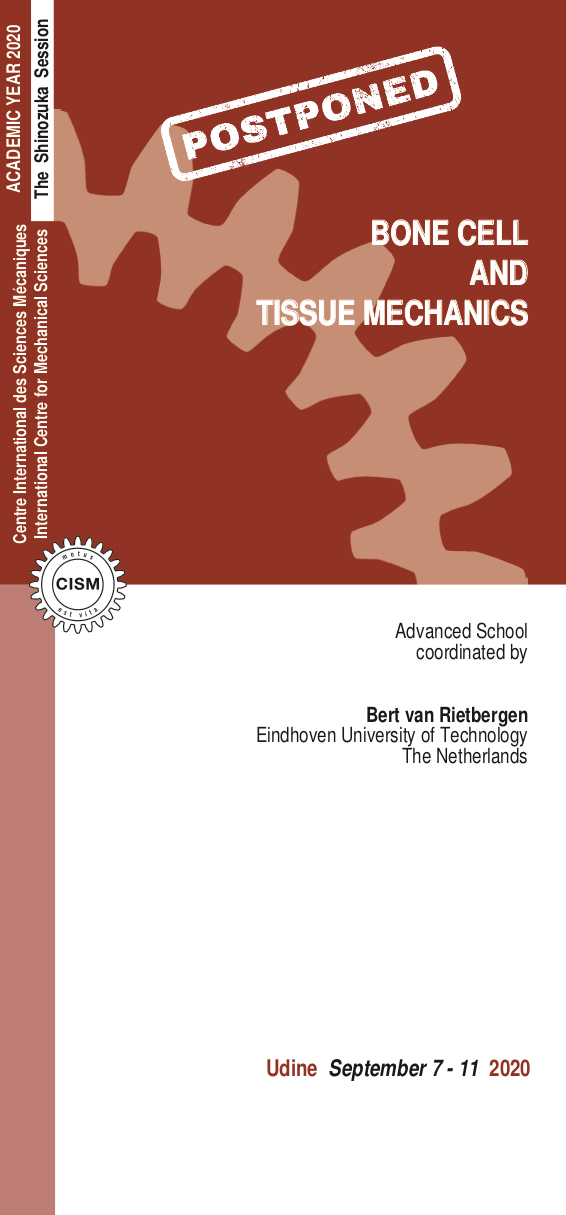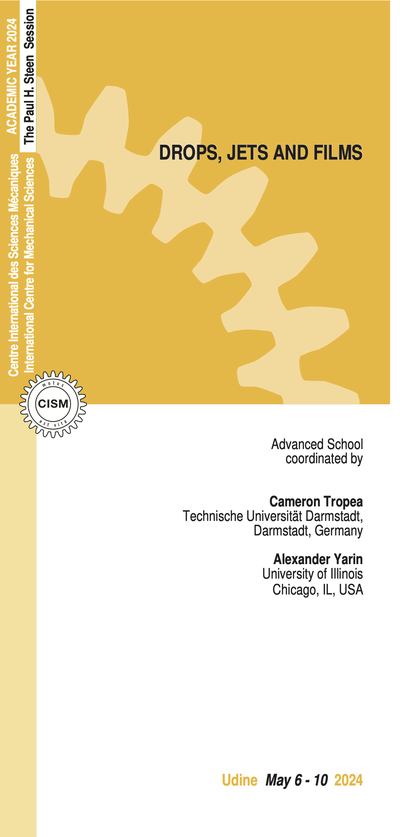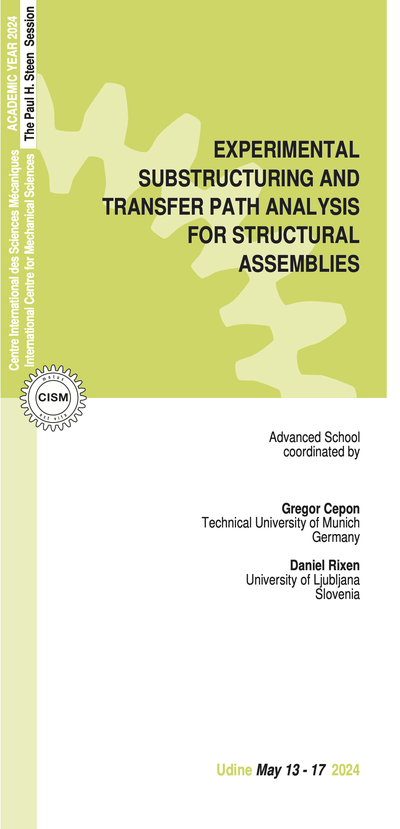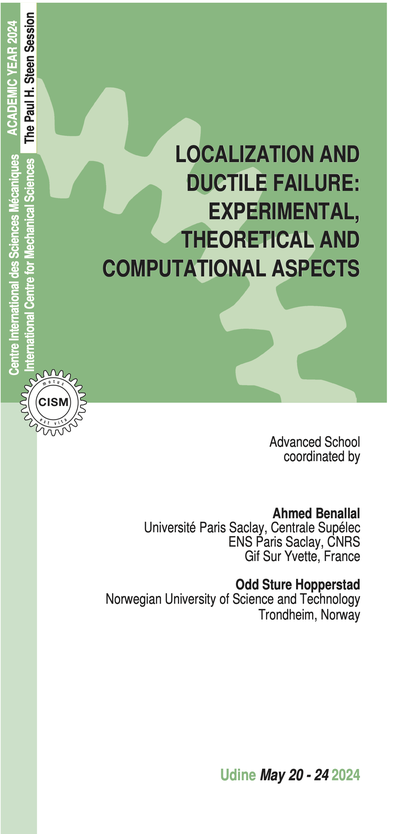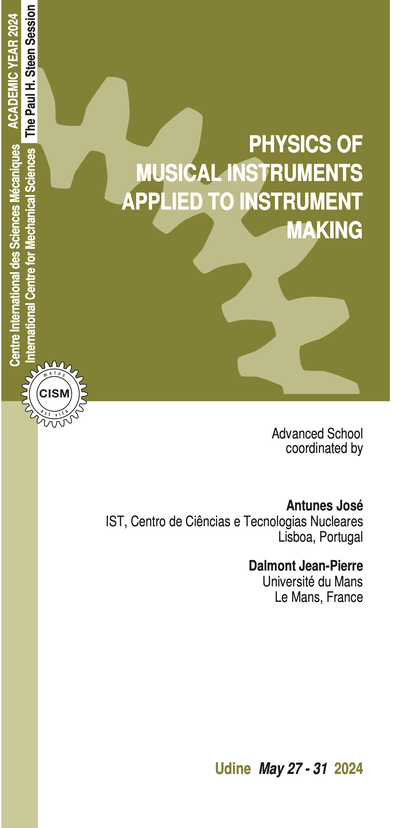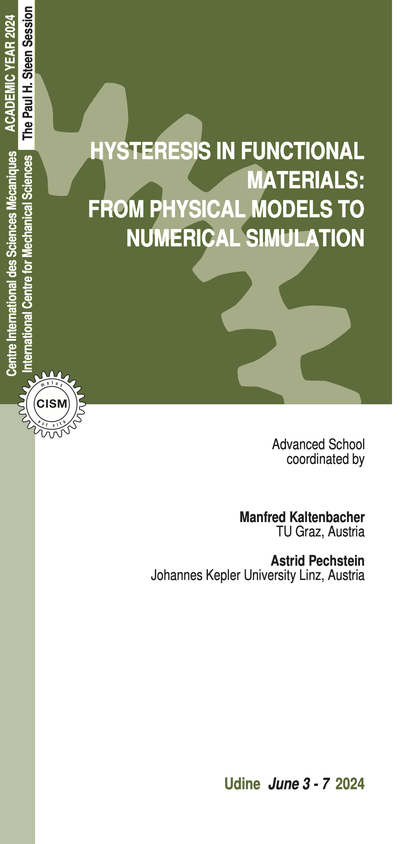Cowin, S.C. and Doty, S.B., Tissue Mechanics, Springer, 2007.
Gefen, A. (editor) Cellular and Biomolecular Mechanics and Mechanobiology, Springer, 2011.
Jacobs, C.R. Introduction to Cell Mechanics and Mechanobiology, Garland Science, 2012.
Silva, M.J. (editor) Skeletal Aging and Osteoporosis: Biomechanics and Mechanobiology, Springer, 2012.
Doblaré, M. and Merodio J. (editors) Biomechanics, Eolss Publishers, 2015.
Pivonka, P. (editor) Multiscale Mechanobiology of Bone Remodeling and Adaptation, CISM International Centre for Mechanical Sciences, 2018.
5 lectures on: bone tissue formation and repair. In-vivo loading; bone mechano-adaptation in aged; principles of bone regeneration; from mechanical forces to tissue straining - how biophysical cues can be used to guide regeneration; exploit the immune-structure interface for bone regeneration.
5 lectures on: bone mineralization and fracture resistance. Multi-scale structure of bone; mechanisms of deformation and fracture of bone; bone mineralization kinetics; mineral distribution and its dynamics; bone mineral in osteoporosis.
5 lectures on: bone biology and bone cell mechanosensitivity. Cells and tissues; bone cells; bone growth and remodeling; osteocyte mechanosensing; histomechanics of cell biology and bone remodeling.
5 lectures on: bone imaging down from the molecules, to the cells, tissue and up to the organ. Hiierarchical bone functional imaging; in-vivo bone tissue and cell imaging; dynamic imaging; local in vivo environment (LivE) imaging; imaging in tissue engineering and regeneration.
6 lectures on: creating loading environments for bone cells and tissues. Traditional animal and cell culture models of bone loading; high magnitude/low frequency and vibration loading; cell mechanobiological processes modulated by substrate stiffness; 3D printing of bone stimulating implants; tissue engineering for humanized 3D models; microfluidics for bone cell mechanobiology.
4 lectures on: the quantification of bone structure, strength and adaptation, with a strong focus on analysis of human bone in-vivo. Bone structural imaging and quantification; bone strength measurement and computation; bone adaptation measurement and prediction; state-of-the-art of bone strength and adaptation.
The registration fee is 600.00 Euro + VAT*, where applicable (bank charges are not included). The registration fee includes a complimentary bag, four fixed menu buffet lunches (on Friday upon request), hot beverages, downloadable lecture notes and wi-fi internet access.
Applicants must apply at least one month before the beginning of the course. Application forms should be sent on-line through the following web site: http://www.cism.it. A message of confirmation will be sent to accepted participants. Applicants requiring assistance with the registration should contact the secretariat at the following email address cism@cism.it.
Applicants may cancel their course registration and receive a full refund by notifying CISM Secretariat in writing (by email to cism@cism.it) no later than two weeks prior to the start of the course.
Cancellation requests received during the two weeks prior to the start of the course will be charged a 50.00 Euro handling fee. Incorrect payments are also subject to a 50.00 Euro handling fee.
A limited number of participants from universities and research centres who are not supported by their own institutions can be offered lodging and/or board, if available, in a reasonably priced hotel or student guest house.
Requests should be sent to CISM Secretariat by July 7, 2020 along with the applicant's curriculum and a letter of recommendation by the head of the department or a supervisor confirming that the institute cannot provide funding. Preference will be given to applicants from countries that sponsor CISM.
Information about travel and accommodation is available on the web site www.cism.it, or can be mailed upon request.
* Italian VAT is 22%.
